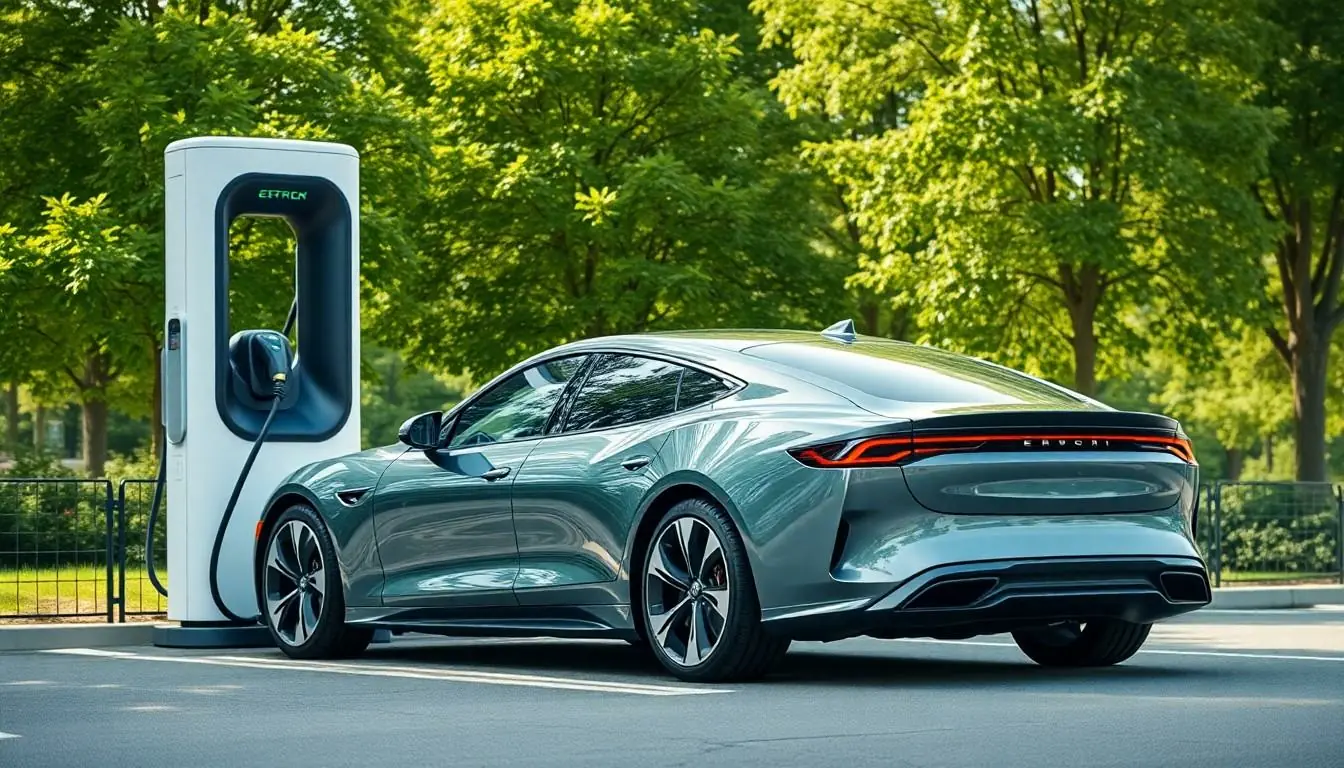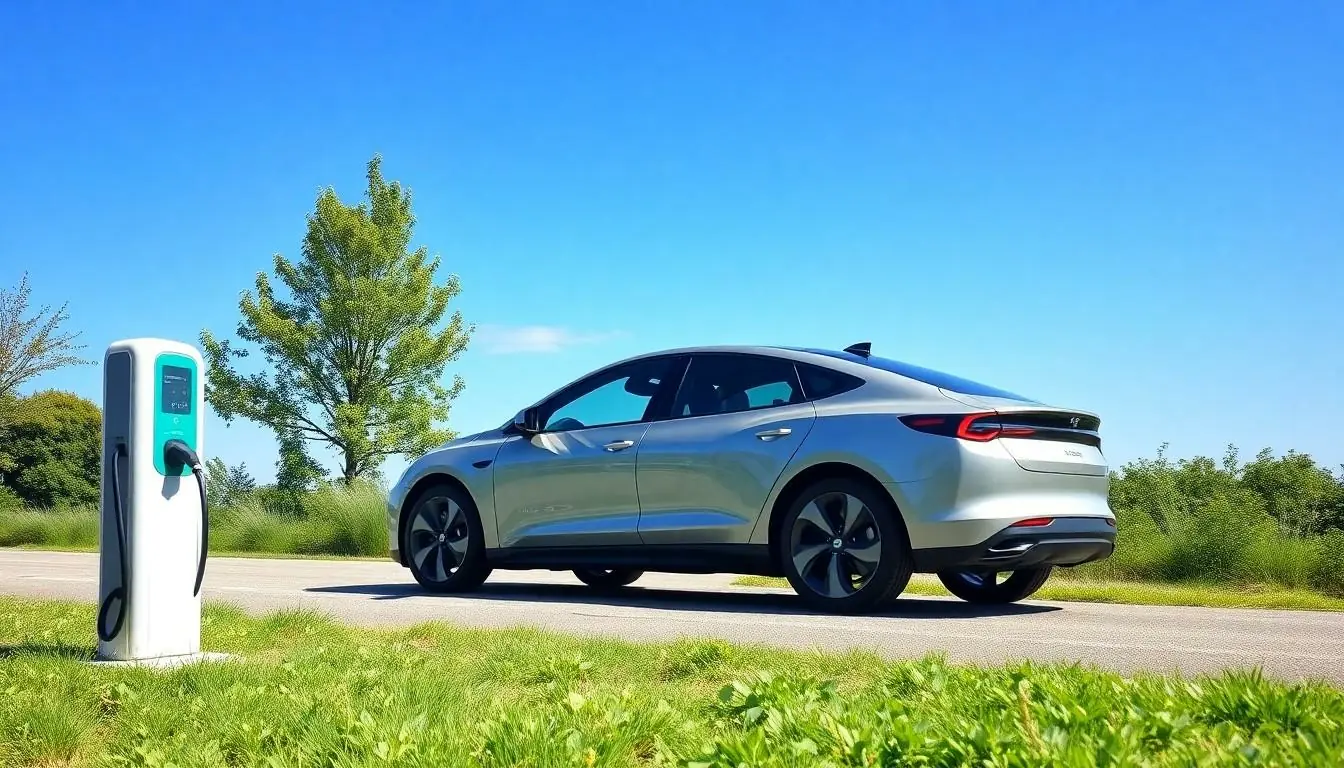When it comes to electric vehicles, one question often sparks curiosity: do they even have transmissions? Picture this: you’re cruising silently down the road, feeling like a futuristic superhero, and suddenly, the thought of gears and clunky shifts pops into your head. Fear not! Electric vehicles are here to change the game.
Table of Contents
ToggleUnderstanding Transmissions in Vehicles
Transmissions play a crucial role in how vehicles operate. They transfer power from the engine to the wheels, influencing speed and torque.
Definition of Transmissions
Transmissions control the amount of power that reaches the wheels. This system alters gear ratios, enabling vehicles to adapt to different driving conditions. Understanding transmissions helps clarify why traditional vehicles operate differently from electric vehicles. In essence, a well-functioning transmission ensures smooth acceleration and deceleration while maximizing fuel efficiency.
Types of Transmissions in Traditional Vehicles
Several types of transmissions exist in traditional vehicles, each offering distinct driving experiences. Manual transmissions provide greater driver control through gear shifting. In contrast, automatic transmissions manage gear changes independently, improving convenience. Continuously variable transmissions (CVTs) deliver infinite gear ratios for seamless acceleration. Dual-clutch transmissions (DCTs) combine elements of manual and automatic systems to enhance performance. Each type contributes uniquely to vehicle performance and driver engagement.
The Mechanics of Electric Vehicles

Electric vehicles utilize a distinct approach compared to traditional automobiles. Their mechanics revolve around efficient power delivery and simplified components.
How Electric Motors Work
Electric motors convert electrical energy into mechanical energy. They generate torque from magnets and wire coils, enabling immediate acceleration. This instant torque is fundamental for driving dynamics in EVs. Motors often have fewer moving parts than combustion engines, enhancing reliability. Regenerative braking recaptures energy during deceleration, further improving efficiency. Various designs exist, including AC and DC motors, contributing to versatility in applications.
Differences Between Electric and Internal Combustion Engines
Electric and internal combustion engines function quite differently. Internal combustion engines rely on fuel combustion to generate power, while electric engines utilize stored energy from batteries. Maintenance needs vary; electric motors typically require less upkeep due to fewer moving parts. Emissions produced also differ significantly; electric vehicles produce no tailpipe emissions, promoting cleaner air. Efficiency ratings often favor electric systems, translating to reduced energy consumption per mile driven. Speed and torque delivery align more directly with driver expectations in electric vehicles, contributing to a unique driving experience.
Do Electric Vehicles Have Transmissions?
Electric vehicles (EVs) do not use transmissions in the traditional sense. They utilize electric motors, allowing for a simpler power delivery system.
The Role of Gearing in Electric Vehicles
Gearing in electric vehicles serves a distinct purpose. It helps optimize the performance and efficiency of the electric motor during various driving scenarios. Most EVs use a single-speed transmission, facilitating seamless acceleration without the need for multiple gears. Torque delivery occurs instantly thanks to the electric motor’s design, providing a more direct response to the driver’s input. Overall, this design leads to smoother acceleration and a more enjoyable driving experience.
Common Transmission Configurations in EVs
Common transmission configurations in electric vehicles often include single-speed gear reductions. This layout reduces complexity and weight, enhancing overall efficiency. Some high-performance models may use multi-speed transmissions for elevated performance and speed management. Despite their rarity, multi-speed configurations can improve power delivery at higher speeds. Manufacturers select the best configuration based on performance requirements and intended use, aiming for optimal energy efficiency and driving dynamics.
Advantages and Disadvantages of Transmissions in EVs
Electric vehicles (EVs) transform the conventional understanding of transmissions, focusing on efficiency and performance in unique ways.
Benefits of Simplified Transmission Systems
Simplified transmission systems enhance the overall efficiency of electric vehicles. Fewer moving parts lead to reduced maintenance needs, which saves time and money. Immediate torque delivery from electric motors ensures a responsive driving experience, allowing for consistent acceleration without the delay associated with traditional gear shifting. Single-speed transmissions provide a straightforward power delivery, optimizing the vehicle’s performance while minimizing weight. This design contributes to improved reliability, making EVs easier to manage for drivers of all skill levels.
Limitations and Challenges
Despite their advantages, simplified transmission systems in electric vehicles face limitations. Some high-performance EVs may struggle with the range of speeds necessary for diverse driving scenarios. With only one gear, these vehicles may not always deliver optimal performance at higher speeds, potentially affecting power management. Additionally, the lack of multi-speed systems restricts adaptability for varied driving conditions, like steep hills or heavy loads. As the market evolves, manufacturers must address these challenges to optimize performance while maintaining the benefits of electric powertrains.
Electric vehicles represent a significant shift in automotive technology by simplifying power delivery systems. With their reliance on electric motors and typically single-speed transmissions, they offer immediate torque and a responsive driving experience. While this design enhances efficiency and reduces maintenance, it does pose challenges for high-performance scenarios. As the EV market continues to evolve, manufacturers must find ways to optimize performance while maintaining the inherent advantages of electric powertrains. The unique characteristics of electric vehicles promise to redefine driving experiences for years to come.





